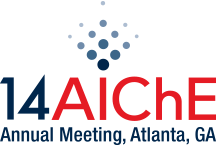

Many softwood fermentation processes are constrained by low sugars and high inhibitor concentrations in the hydrolysate. Low sugars concentrations negatively impact economics by increasing distillation costs and requiring larger equipment throughout the process, while inhibitors reduce fermentation rates, requiring larger fermentor sizes. Though high solids pretreatment and hydrolysis can improve fermentable sugar concentrations, these processes result in reduced sugar yields and increased mixing requirements. Sugars concentration operations after low solids hydrolysis are another technique to increase fermentable sugar concentrations; unfortunately, inhibitors are often concentrated along with the sugars. This analysis compares the use of multiple effect evaporation (MEE) and nanofiltration (NF) to concentrate glucose in a ponderosa pine hydrolysate from 30 g/l to 100, 150 and 200 g/l before S. cerevisiae fermentation. To ferment this high gravity, inhibitor containing feed, conventional batch fermentation was compared with continuous fermentation with and without microfiltration (MF) cell recycle.
Detailed capital and operating cost analyses were used to calculate the equivalent annual operating cost (EAOC = amortized capital cost + yearly operating costs) for a 5 MGY ethanol production facility. Evaporation offers the benefit of complete furfural and partial acetic acid and HMF removal, while nanofiltration has the potential to remove 65-70% of all inhibitors. Analysis showed that concentration to 100 g/l provided the most economic benefit; at higher sugars concentrations high inhibitor levels coupled with high final ethanol titers increased fermentor sizes and negatively impacted EAOC. Evaporation is more capital and energy intensive than distillation and did not reduce EAOC for any glucose level evaluated, though batch fermentor size and distillation costs are reduced substantially. Nanofiltration is not as energy intensive, but requires replacement of expensive membranes due to fouling; however, it has the potential to lower production cost by $0.10 per gallon (24% reduction in capital and 10% increase in operating expenses) when coupled with batch fermentation. Continuous fermentation with cell recycle coupled with nanofiltration was the most economical of the systems studied, reducing production cost by $0.30 per gallon (56% reduction in capital and 16% increase in operating expenses) when glucose is concentrated to 100 g/l. Sensitivity analyses investigating solids removal assumptions and nanofiltration performance show that these assumptions could be varied considerably (up to 3 times higher solids removal cost) while still lowering overall EAOC compared to the no concentration process.
